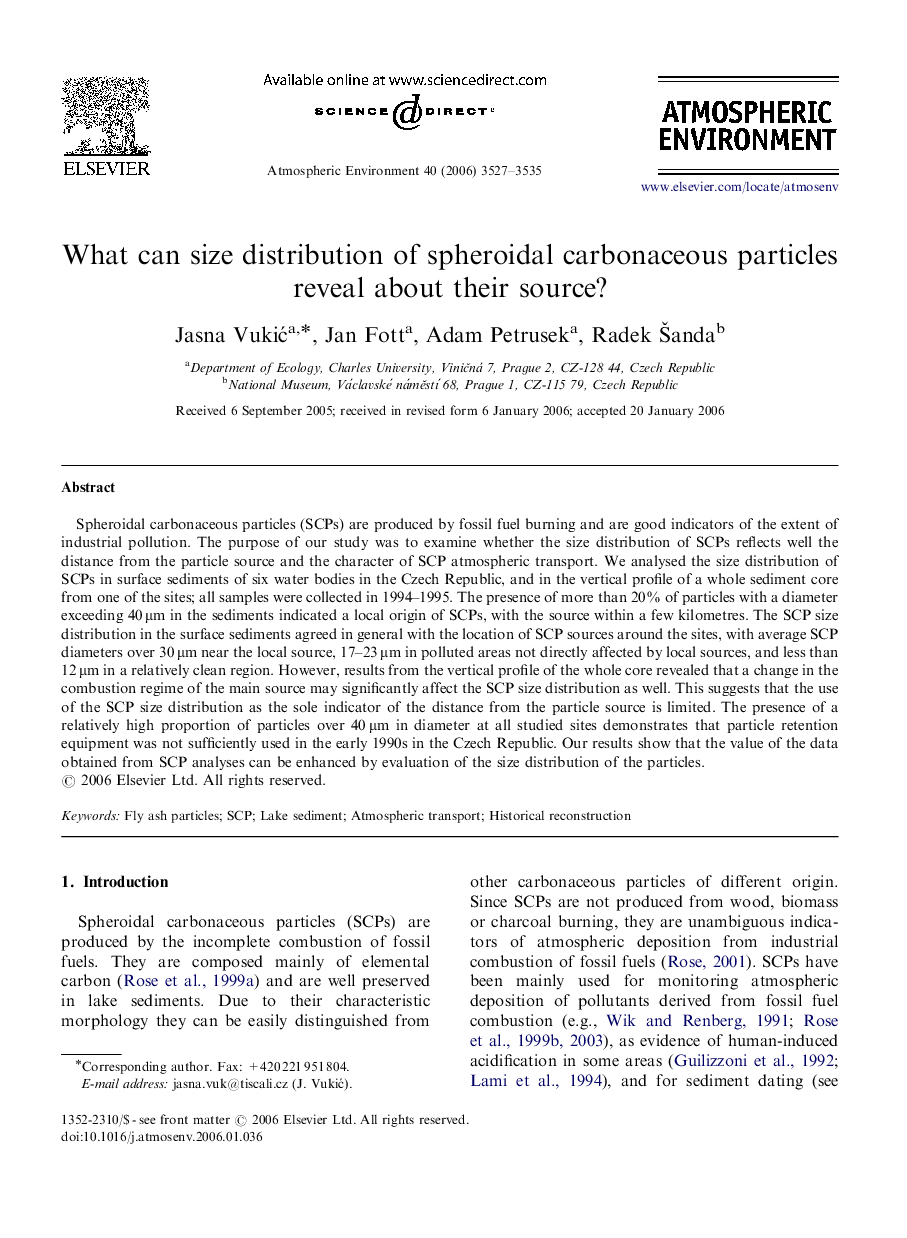| Article ID | Journal | Published Year | Pages | File Type |
|---|---|---|---|---|
| 4444715 | Atmospheric Environment | 2006 | 9 Pages |
Abstract
Spheroidal carbonaceous particles (SCPs) are produced by fossil fuel burning and are good indicators of the extent of industrial pollution. The purpose of our study was to examine whether the size distribution of SCPs reflects well the distance from the particle source and the character of SCP atmospheric transport. We analysed the size distribution of SCPs in surface sediments of six water bodies in the Czech Republic, and in the vertical profile of a whole sediment core from one of the sites; all samples were collected in 1994-1995. The presence of more than 20% of particles with a diameter exceeding 40 μm in the sediments indicated a local origin of SCPs, with the source within a few kilometres. The SCP size distribution in the surface sediments agreed in general with the location of SCP sources around the sites, with average SCP diameters over 30 μm near the local source, 17-23 μm in polluted areas not directly affected by local sources, and less than 12 μm in a relatively clean region. However, results from the vertical profile of the whole core revealed that a change in the combustion regime of the main source may significantly affect the SCP size distribution as well. This suggests that the use of the SCP size distribution as the sole indicator of the distance from the particle source is limited. The presence of a relatively high proportion of particles over 40 μm in diameter at all studied sites demonstrates that particle retention equipment was not sufficiently used in the early 1990s in the Czech Republic. Our results show that the value of the data obtained from SCP analyses can be enhanced by evaluation of the size distribution of the particles.
Related Topics
Physical Sciences and Engineering
Earth and Planetary Sciences
Atmospheric Science
Authors
Jasna VukiÄ, Jan Fott, Adam Petrusek, Radek Å anda,
